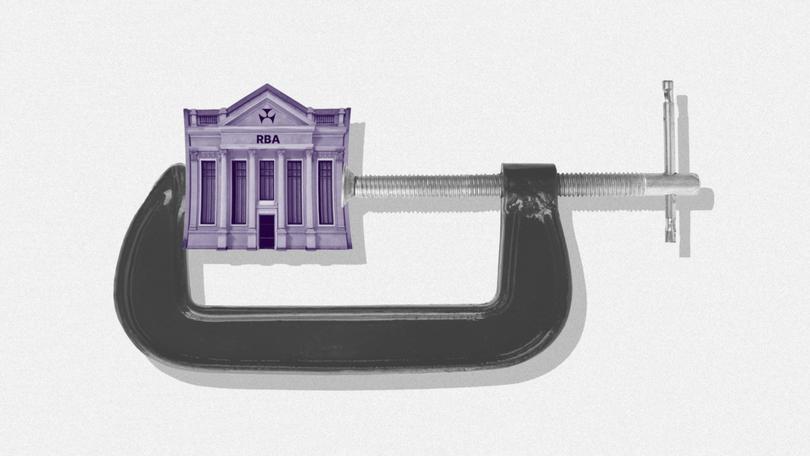AARON PATRICK: RBA watchers see a breach of independence in interest rates move

A core principle of monetary policy requires the central bank to be completely independent of government.
Some economists, though, suspect Tuesday’s interest rate cut by the Reserve Bank of Australia was a capitulation to political pressure to deliver good economic news before the imminent federal election. One theory is that Governor Michele Bullock was over-ruled by the nine-person board.
“I think the pressure, from all quarters, had reached its limit,” says Steve Hamilton, an Australian economist working in the US. “It does not feel like a decision that was an RBA position that the RBA’s willing to defend fully.”
Sign up to The Nightly's newsletters.
Get the first look at the digital newspaper, curated daily stories and breaking headlines delivered to your inbox.
By continuing you agree to our Terms and Privacy Policy.Among all public service institutions, the Reserve Bank’s independence is almost as preciously guarded as the High Court’s. To be able to credibly fight inflation, investors have to believe the central bank won’t cave to politicians’ desire to pump cheap money into the economy, especially during downturns.
Professor Richard Holden of the University of NSW is one of Australia’s top monetary policy experts. He fears the RBA’s board, after keeping rates high over a year, could no longer resist pressure from Treasurer Jim Chalmers, Labor MPs and unions. Even mortgage brokers held a protest in Sydney before Tuesday’s meeting demanding a rate cut.
“Nobody other than the people in the room know what the exact rationale was but it looks like they caved into pressure from various quarters,” Professor Holden says.
Labor connections
Of the nine-member board, two were appointed by the government and have deep professional ties to the Labor movement: former industrial judge Iain Ross and company director Elana Rubin. A third is the head of the Treasury Department, Steven Kennedy, who represents the government in board discussions.
The Reserve Bank declined to comment.
Even economists who don’t accept the pressure theory say the decision to cut rates to 4.1 per cent was a close call. A drop in the inflation rate from 2.8 per cent to 2.4 per cent at the end of 2024 made it possible. But unemployment remained a stubbornly low at 4 per cent.
The main economic danger of the rate cut is a boost to house prices - one credible forecaster expects 6-10 per cent gains this year - making Australians feel richer. That could trigger an inflation surge.
Price rises could already be accelerating, according to Zac Gross, an RBA economist-turned-university lecturer, which might force rates up in the second half of the year - when the election will likely be long forgotten.
“If it turns out that was a one-off fluke, then they can always change their minds,” he said, referring to the RBA board. “If they have to pause in three months and hike in five months, that wouldn’t be the end of the world.”
Poor communication skills
Jonathan Kearns, an ex-RBA economist now at Challenger funds management, said he never heard anyone at the central bank consider political pressure or elections.
He has another theory for what may have happened: an information vacuum while RBA staff were on Christmas holidays.
In the absence of announcements from the central bank over December and January, investors concluded that rates would have to drop this week. The chances of a cut were as high as 90 per cent, according to the bond market.
If they had not been, upset investors would have accused the RBA of poor communications. Ms Bullock, the governor, regards clear explanations of monetary policy as one of her top priorities.
The importance of central bank credibility is one of the reasons Professor Holden argues it should have kept rates on hold. Even if it did not give in to political pressure, the central bank allowed itself to look like it did, he says, which was almost as bad.
“As with many things, reality and the appearance of realty are important,” he says. “When people can craft a plausible narrative about them not being independent, even if it is not true, if it’s plausibly true that’s a problem.”

